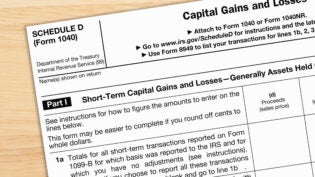
When entrepreneur and Muppeteer Jim Henson made his first dollar, he framed it and hung it on his office wall. For everyone, whether you’re the company owner or an employee, earning an income is a source of pride and a primary foundation for economic security.
Surprisingly, in spite of how important getting paid actually is, most people don’t understand the fundamentals of payroll, including what’s taken out or added to a paycheck.
What’s a Paycheck Checkup?
It’s barely made the news that, given the recent changes to the tax laws, the Internal Revenue Service (IRS) is recommending that everyone should do a paycheck checkup. Ever heard of the IRS withholding calculator?
For that matter, what’s a withholding amount? What’s the difference between a paycheck and a pay stub? And who’s this FICA person anyway?*
Why is Knowing How to Read a Paycheck is So Important?
From paying the bills to retaining valued workers, paychecks matter to employers and employees.
- 71% of Americans say that a latepaycheck would make it very or somewhat difficult to pay their bills.
- 24% will look for a new job after just one paycheck mistake.
- 42% say items, like taxes and deductions, are hardto understand.
- 26% will turn to a managerfor help if there’s a mistake.
Paycheck vs. Pay Stub — Is There a Difference?
Yes, there is. A paycheck is a physical check, while a pay stub is a document that summarizes the amounts in a paycheck. As direct deposit is becoming more common, an employee is more likely to receive an email with a link to pay stub details versus a paper check.
What are Some of the Most Basic Details in a Pay Stub?
While there’s no specific format set in stone. There’s some standard information that’s included no matter how a pay stub is designed.
Some of the most basic details include:
- Employer and employee addresses — both of which should be up-to-date and accurate.
- The pay date — the date the paycheck is issued.
- Pay period — the dates that the paycheck covers.
- Pay rate — how much the individual is being paid per hour or per year.
What’s the Difference Between Total Pay (Gross Pay) and Net Pay (Final Pay)?
This is really the crux of why a pay stub is provided to employees. Total pay is the amount of the paycheck before any taxes or other deductions are taken out or any contributions are added. Net pay is the final amount that the employee takes home.
What Are Deductions and What’s Taken Out of a Paycheck?
The verb deduce means to subtract or take away. Income tax is the deduction that everyone is most familiar with. As part of issuing payroll, employers (businesses) have to take out (withhold) a percentage of each employee’s taxable pay. This is done every time payroll is run.
Remember wondering who FICA was?
FICA is actually the Federal Insurance Contributions Act, which is also responsible for two other deductions — Medicare and Social Security.
In payroll speak, things like income tax, Medicare and Social Security are called payroll taxes (employment taxes). Other deductions can include state and local income taxes, employee 401K contributions, insurance payments, profit sharing, union dues and garnishments. (In Alaska, New Jersey and Pennsylvania, employees also have deductions for state unemployment insurance.)
What Are Contributions and What’s Added to a Paycheck?
To contribute means to add. When it comes to payroll, employees aren’t the only ones who have to pay taxes. Employers also contribute to Social Security and Medicare. Plus, they’re also responsible for unemployment insurance on a federal and state level.
Other contributions may also include other income, like overtime, tips, bonuses, commissions and expenses or paid time off like sick, personal or vacation time. All of the income types (incomes) represented by contributions are considered taxable (subject to income and or payroll taxes like Medicare and Social Security).
What’s the Difference Between Total vs Year-to-Date Amounts in a Paycheck?
Depending on how a pay stub is formatted, you may see figures for total and year-to-date amounts. When you see these figures, the total is the total amount of the paycheck and year-to-day is the total since the start of the fiscal year for your payroll.
What Happens to the Payroll Taxes That the Employer Takes Out or Adds to a Paycheck?
The money for federal and state income tax, Medicare, Social Security and federal unemployment payments are all sent to the IRS. Depending on several factors, the funds are deposited on a weekly, monthly, yearly or next-day schedule.
State and local taxes are forwarded and reported to the appropriate state and local tax authorities. Automating this process of depositing and reporting payroll taxes is one of the main reasons businesses use payroll software.
How is a Paycheck or Pay Stub Related to a W-2?
A W-2, Wage and Tax Statement, is issued at the end of the year as a legal tax document. It summarizes the entire year’s worth of paycheck information in one document. Employers send one copy to the IRS and employees use their copies to file their personal income taxes.
- W-2s are due to are due to the Social Security Administration (SSA)and employees by January 31 each year.
- The amounts in a W-2 should match the employee’s final pay stub of the year.
Each time an employee receives a paycheck, he or she should review the pay stub and ask questions if something doesn’t make sense or is possibly incorrect.
The longer any error is unfixed, the greater the potential tax and financial implications. For example, if the income tax withholding isn’t high enough, the employee will face a larger personal income tax bill. Or, if the employer isn’t contributing the right payroll tax amounts, it’ll cost more to fix the longer it goes on undetected. (Think fines and compound interest.)
In terms of record keeping, employees should keep pay stubs for about a year and W-2s (as supporting income tax documents) should be kept a minimum of three years. The standards for employers are more difficult to define due to the many labor and tax laws involved. The IRS recommends that employers keep payroll tax records for a minimum of four years. However, as payroll records touch so many areas of compliance, employers should be sure to check all the applicable guidelines.
The Main Takeaway — Everyone Should Read Their Pay Stubs
Whether you receive a paper or electronic pay stub, everyone — employees and employers — should make the time to check this information on a regular basis. Employers work hard to pay their employees and employees work hard to earn their paychecks. Use this newfound knowledge to prevent mistakes and get a better understanding of where your money goes.
Helpful Links and Resources
For more, see these sources:
American Payroll Association — 2017 Getting Paid in American Survey
Bank of America — Better Money Habits Blog
IRS — Small Business and Self-Employed Tax Center
Kronos Workforce Institute — 2017 Engaging Employees Through Payroll Survey Part I
Kronos Workforce Institute — 2017 Engaging Employees Through Payroll Survey Part II
Wagepoint Interactive State-by-State Tax Map
Wagepoint US Payroll Tax Guide and Infographic
The advice we share on our blog is intended to be informational. It does not replace the expertise of accredited business professional.
 Author: Blogmaster, content creator and inbound marketing guru at Wagepoint, Michelle Mire enjoys simplifying complex payroll topics and generating articles with actionable advice for small businesses and startups. When not at the keyboard, she enjoys chocolate, running and quality television (not always in that order).
Author: Blogmaster, content creator and inbound marketing guru at Wagepoint, Michelle Mire enjoys simplifying complex payroll topics and generating articles with actionable advice for small businesses and startups. When not at the keyboard, she enjoys chocolate, running and quality television (not always in that order).











